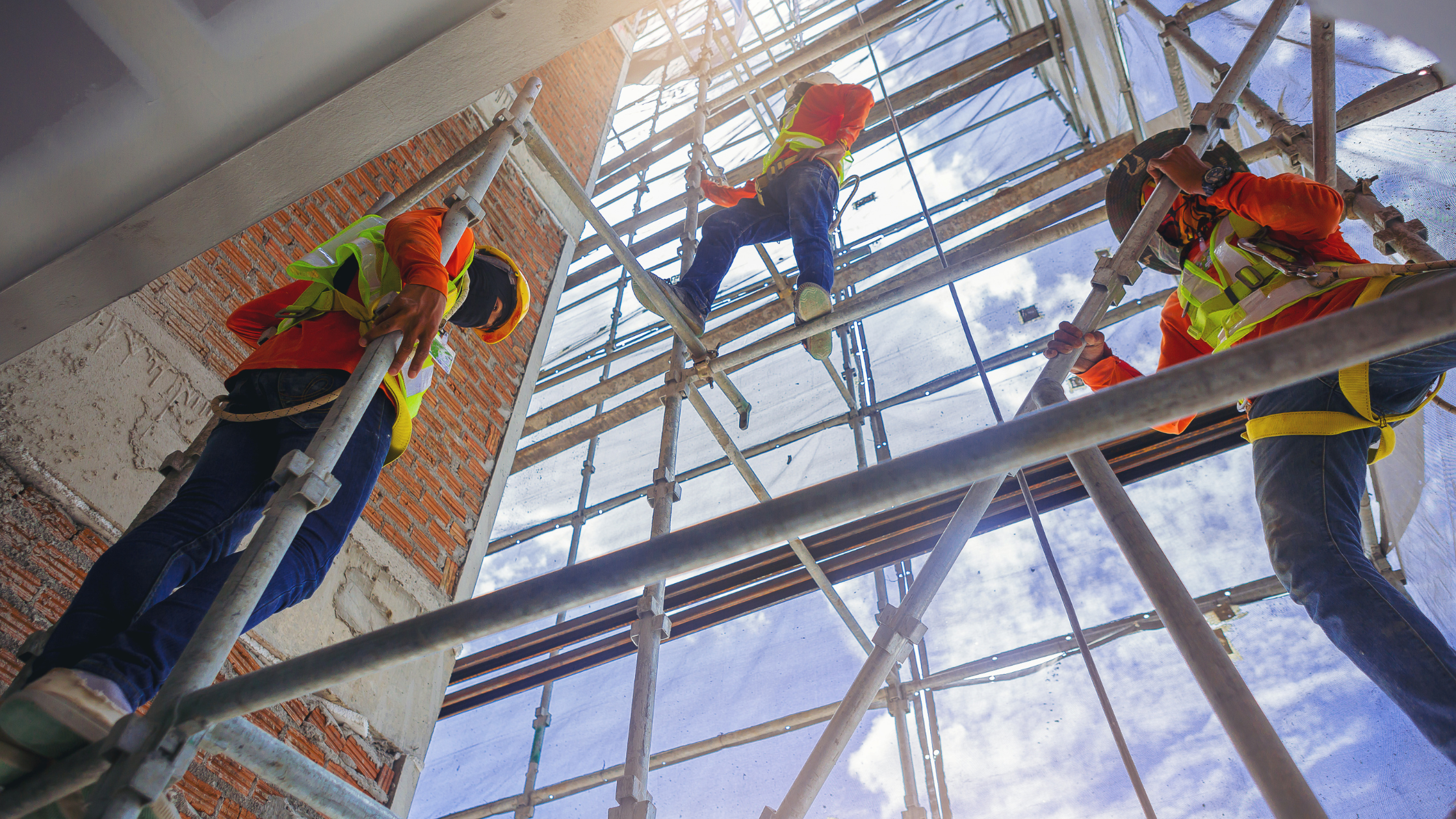It should go without saying that safety should be a priority for any work environment that uses scaffolding.
The first step in keeping workers safe when they work with scaffolding is performing regular safety inspections to ensure the scaffolding is safe to use. After all, this is not an area where you want to take any chances or risks with employee safety. Needless to say, a scaffold inspection checklist is critical to have to make sure that a full inspection is completed every time. With that in mind, let’s go over the critical steps of performing a proper scaffold safety inspection.
Outside Hazards
Oddly enough, the first step in inspecting scaffolding is inspecting things outside the scaffolding. Are there potential safety concerns in the area around the scaffolding that needs to be addressed? Are there any ground hazards that could interfere with the scaffolding? Are there loose tools or debris that could cause someone on the scaffolding to trip? Is the surface clean and free of wet spots or anything that can cause a slippery surface? Before taking a close look at the scaffolding itself, make sure the rest of the area is clear of potential safety hazards.
Overhead Hazards
The area directly overhead scaffolding also needs to be inspected. Are there power lines that workers should know about? Are there weather or windy conditions to know about? Is there anything that could fall onto the scaffolding from above? These should all be considered potential safety hazards that should be inspected before employees start working with scaffolding.
Structural Integrity
After all of the outside hazards have been checked, the structural integrity of the scaffolding becomes the biggest safety priority. There are weight restrictions on scaffolding that should never be exceeded. In fact, it’s best not to come close to exceeding those weight limits. This means knowing the weight limits and knowing the weight of every person or object that will be on the scaffolding. It’s also critical to perform a close inspection for any defects or signs of weakness in the scaffolding. Even the slightest defect can threaten the structural integrity of scaffolding and reduce its weight limit, putting everyone involved at risk.
Access
Gaining access to scaffolding is sometimes an overlooked part of safety. Every access point needs to be inspected to ensure they aren’t being blocked and are safe to use. Ladders should always be securely attached and located in a way that doesn’t threaten the stability of the scaffolding. Keep in mind that injuries can happen when employees are climbing on and off scaffolding, making access points a key part of safety.
Guardrails
Along with access points, guardrails are another key element of scaffolding safety that needs to be inspected before every use. There are certain requirements for both guardrails and toe boards depending on the height of the scaffolding. If the proper guardrails aren’t in place, it won’t be safe for employees. Also, just like every other part of the scaffolding, guardrails should be checked for defects or imperfections that could cause them to malfunction at the wrong time and not serve their function.
Staying Ahead of Safety Issues
Whether your employees work with scaffolding or not, it’s always best to stay ahead of all potential safety matters. That’s why the safety management system from EHS Insight can be the perfect solution. Our software is designed to track and monitor every part of workplace safety, making it easier to spot problems and address them before they lead to accidents. That’s why companies in a variety of industries trust our system to help them create a safe workplace.
If your business wants to do more to stay ahead of potential safety problems, let us know so that we can talk more about how our software fits your safety needs.
